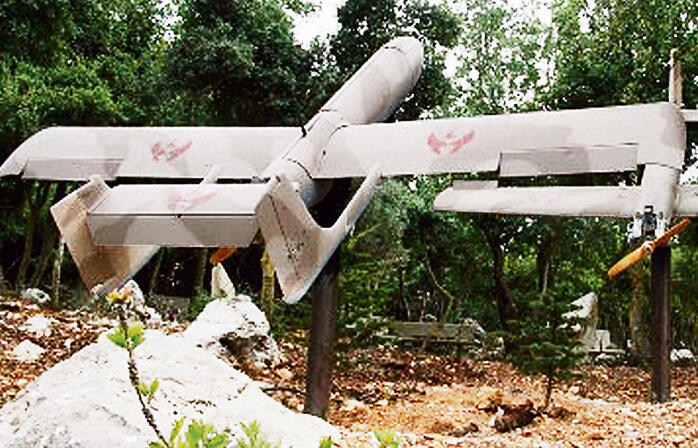Getting your Trinity Audio player ready...
Amid the IDF's tactical maneuvers in Gaza, the Air Force and the Air Defense Division have been locked in a complex, Sisyphean struggle for nearly nine months. The spotlight was cast once again on the issue of air defense on Tuesday when Hezbollah released a high-definition, color video showcasing drone footage of sensitive sites in the Haifa Bay area. This footage not only rattled the public but also fueled the psychological warfare waged by the terrorist organization.
A Hezbollah drone monitoring over the Haifa bay
Hezbollah's reconnaissance drone is a minuscule device equipped with a GoPro camera, capable of flying dozens of miles but without the capacity to carry or drop weapons. According to the IDF, it was monitored, and a decision was made not to intercept it since it was not an offensive weapon.
Still, there's no denying that the challenge posed by drones in the northern conflict is intensifying. During the war, Hezbollah's explosive drones inflicted significant casualties and damage in Israel.
The Air Force began grappling with this threat over a decade ago. The first drone interception from the Gaza Strip occurred in 2021 during Operation Guardian of the Walls. Although Iron Dome wasn't originally designed to counter drones, the Air Force has been adapting it to provide an adequate response. The primary issue with drones, especially those from Lebanon, is the short distance to the homes of northern residents, which doesn't allow for early detection.
To detect these threats, the Air Force employs fighter jets that can also perform interceptions. This strategy was employed during the night of the Iranian attack when dozens of fighters were airborne, identifying and intercepting drones with air-to-air missiles. A similar approach was taken about a week ago following the assassination of a senior Hezbollah leader in Lebanon.
Adding to the complexity is the topography. Unlike the flat terrain of the Gaza Strip, the mountainous north presents significant challenges for sensors trying to locate drones.
About 20,000 aerial targets of various types have been launched at Israel since the war began
Alert management in the face of this threat also requires a different approach. Drones can maneuver unpredictably, stopping or detonating at any given moment and place. Hence, an alert is triggered every time one approaches a specific area, creating a scenario of "chain alerts."
Estimates suggest that about 20,000 aerial targets of various types have been launched at Israel since the war began. This raises the question: why are there so many false alarms? The Air Force has decided to err on the side of caution, meaning that anything can trigger the system. For instance, birds and cranes with flight angles similar to drones can activate the sensitive sensors. Additionally, bullet fire into the air, as often happens in the Gaza border region, also sets off these alerts.







